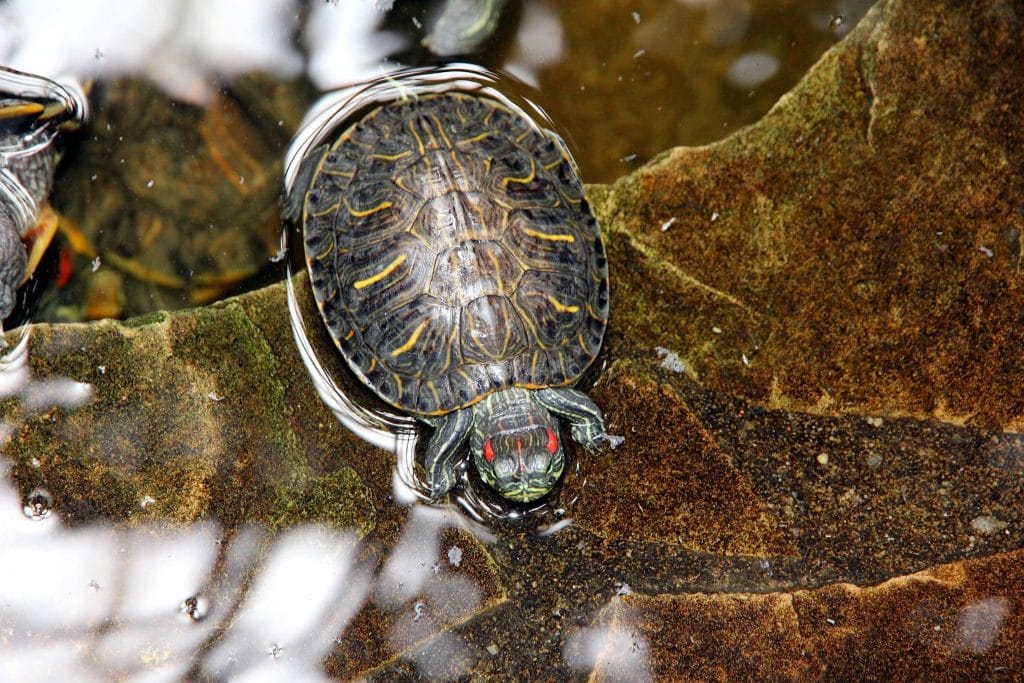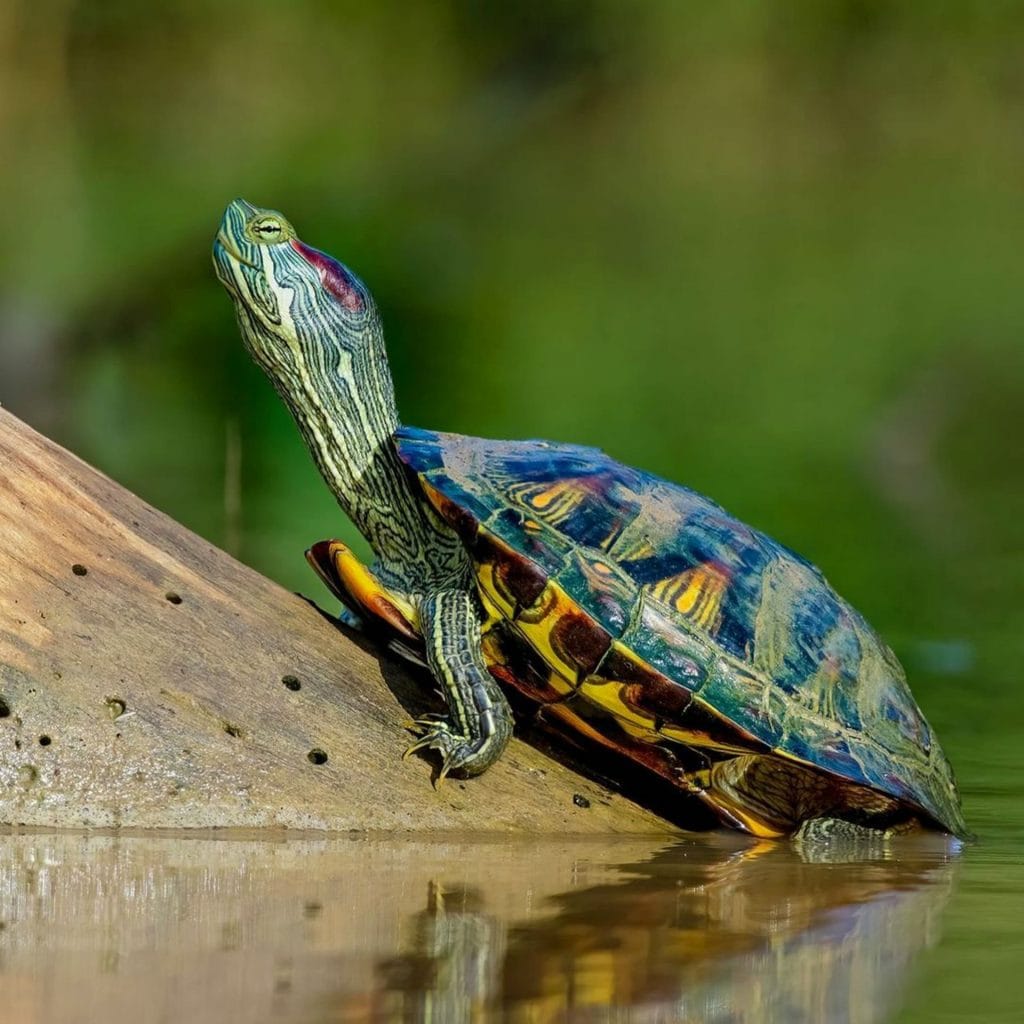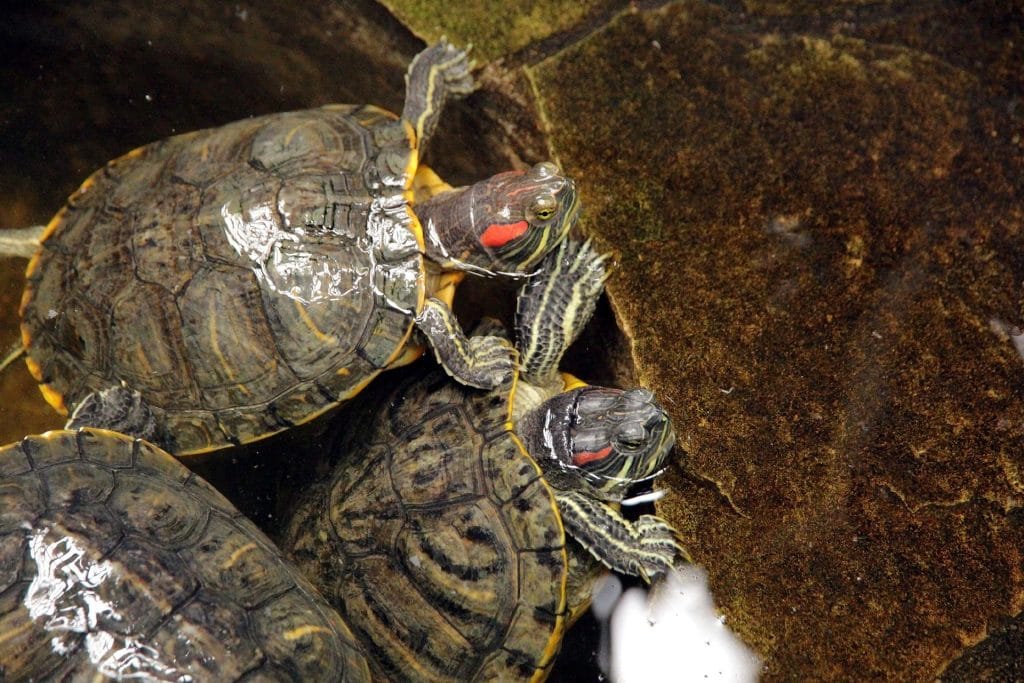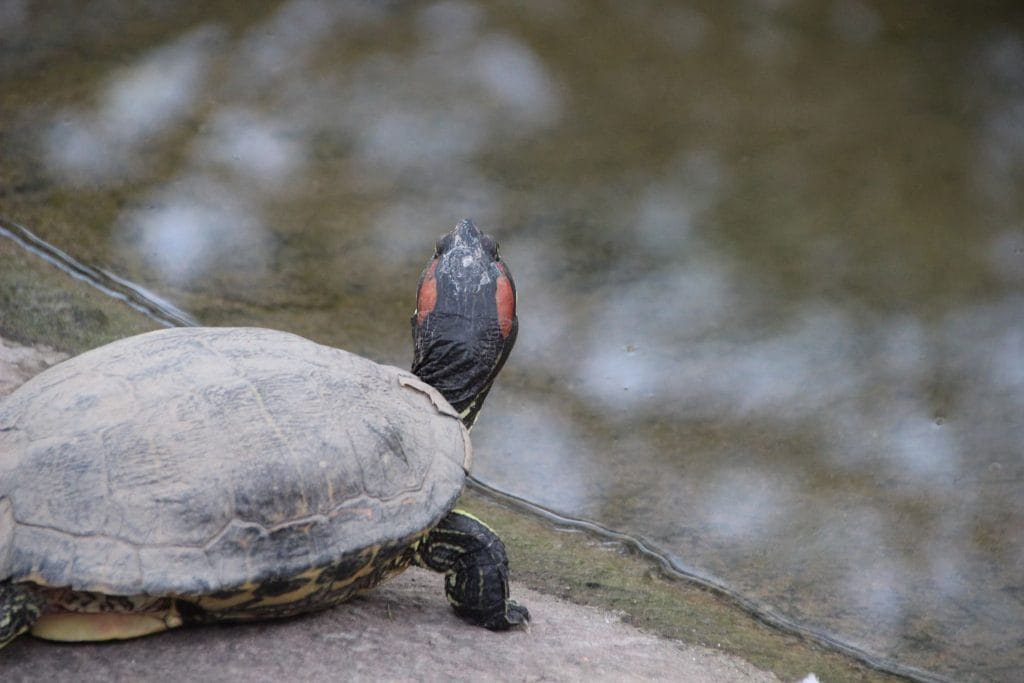- Understanding the Red-Eared Slider Turtle: Essential Red-Eared Turtle Care
- Red-Eared Turtle Care: How to Set Up a Tank for Your Red-Eared Slider Turtle
- Red-Eared Turtle Care: Understanding the Diet of Your Red-Eared Slider Turtle
- Red-Eared Turtle Care: Sexing Red-Eared Sliders and Exploring Their Reproduction
- Red-Eared Turtle Care: Health and Wellness of Red-Eared Slider Turtles
- Caring for Your Red-Eared Slider: A Long and Happy Partnership
Are you ready to dive into the world of pet turtles? The Red-Eared Slider turtle is not only a colorful addition to your home but also a fascinating companion that can live for decades! With its stunning red stripe and vibrant shell, this pet is beloved by many. But caring for a Red-Eared Slider goes beyond admiring its beauty—understanding their needs is crucial for a happy and healthy life. From creating the perfect tank setup to providing a balanced diet and recognizing health concerns, this guide covers everything you need to know to ensure your Red-Eared Slider thrives for 20 to 30 years in your care. Let’s explore the essential elements of Red-Eared Slider care together!
Understanding the Red-Eared Slider Turtle: Essential Red-Eared Turtle Care
The Red-Eared Slider turtle is an intriguing and popular pet, famed for its distinctive and colorful appearance. With a striking red stripe behind each eye, its shell showcases a mesmerizing blend of greens, browns, and yellows. These visual beauties make the Red-Eared Slider a standout choice for aquarium enthusiasts.
Understanding their behavior is key to successful red-eared turtle care. These turtles are curious and active, often seen basking in the sun or swimming gracefully. Their social nature means they thrive in engaging environments where they can interact with humans and other turtles.
For potential pet parents, the cost of a Red-Eared Slider is usually between $20 to $40 for a hatchling. While the upfront price is modest, effective red-eared turtle care requires an investment in their habitat and diet to ensure a healthy life.
When it comes to their lifespan in captivity, these turtles can live impressively long, often reaching 20 to 30 years with proper care. This longevity makes them a long-term companion, perfect for those committed to learning and providing exemplary red-eared turtle care.
Red-Eared Turtle Care: How to Set Up a Tank for Your Red-Eared Slider Turtle

Creating the ideal habitat is crucial for red-eared turtle care. Here’s a comprehensive guide on setting up an optimal tank environment for your Red-Eared Slider turtle.
Red-Eared Slider Turtle Tank Size: Start by considering the size of the tank, as a spacious environment is essential for a healthy and active turtle. For an adult Red-Eared Slider, a minimum of a 75-gallon tank is recommended. This provides ample room for swimming, exploration, and exercise, crucial for their physical and mental well-being. If you’re keeping more than one turtle, increase the tank size accordingly to prevent overcrowding and stress.
Red-Eared Slider Turtle Tank Set Up: Setting up the tank involves recreating a natural and comfortable environment. Begin with filling the tank with clean, dechlorinated water, deep enough to allow your turtle to completely submerge and swim freely. Additionally, arrange for both aquatic and dry areas within the tank. A sturdy basking platform is vital, as turtles need a dry place to rest, absorb heat, and bask in light. Consider using driftwood or commercially available basking docks that securely attach to the tank.
Red-Eared Slider Turtle Water Temperature: The right water temperature is crucial for your turtle’s health, keeping them active and preventing illness. Use an aquarium heater to maintain a consistent water temperature between 75°F and 80°F. This not only promotes proper metabolic function but also aids in digestion and overall wellness. Regularly monitor the water temperature using a reliable thermometer.
Heat and Light: Both heat and light are indispensable components of red-eared turtle care. Install a UVB light above the basking area to substitute for natural sunlight, which is crucial for calcium absorption and maintaining strong, healthy shells. Position the lamp to keep the basking area within a temperature range of 85°F to 95°F. Additionally, use a heat lamp to ensure the area remains at this optimal warmth. Have these lights on for about 10-12 hours a day to mimic natural daylight cycles.
Substrate: When selecting a substrate, choose materials that are safe and functional. Large river rocks or gravel too large for your turtle to swallow are excellent choices. These materials prevent accidental ingestion while providing a natural look and feel to the tank. Avoid small pebbles and sand to prevent health hazards.
Incorporate these elements diligently to create a supportive and enriching environment for your Red-Eared Slider turtle. Through meticulous attention to the living conditions and routine check-ups, you ensure a thriving habitat that contributes significantly to your pet’s health, happiness, and longevity. Following these steps guarantees comprehensive red-eared turtle care, and ultimately, a fulfilling companionship with your shelled friend.
Red-Eared Turtle Care: Understanding the Diet of Your Red-Eared Slider Turtle

A well-balanced diet is a cornerstone of red-eared turtle care. Ensuring your Red-Eared Slider turtle receives the right nutrition is essential for their growth, health, and longevity.
What Do Red-Eared Slider Turtles Eat?: These turtles are omnivores, requiring a mix of animal and plant-based foods. In the wild, they feast on aquatic plants, algae, and small creatures like fish, insects, and crustaceans. It’s important to replicate this variety in captivity to meet their dietary needs.
Animal Protein: Young and growing turtles need a higher proportion of animal protein. This includes commercial turtle pellets that are formulated to provide essential nutrients. You can also offer live or frozen foods such as mealworms, crickets, and small feeder fish like guppies. These foods provide the protein and fat necessary for healthy development.
Vegetation: As your Red-Eared Slider matures, increase the portion of plant-based foods in their diet. Offer leafy greens like romaine lettuce, dandelion greens, and collard greens. You can also supplement with aquatic plants such as duckweed or water lilies to mimic their natural diet.
Fruits and Vegetables: Occasionally, your turtle can enjoy fruits like sliced apples, berries, or melons, though these should be given sparingly due to their sugar content. Vegetables such as carrots, squash, and bell peppers can also be offered, chopped into bite-sized pieces for easy ingestion.
Supplements: To ensure proper health, it’s crucial to provide calcium supplements. You can do this by adding a cuttlebone to the tank, allowing your turtle to munch on it as needed. Additionally, vitamin supplements sprinkled over their food can help maintain optimal nutritional balance.
Feeding Schedule: Establish a consistent feeding schedule. Young turtles should be fed daily, while adults can be fed every other day. Monitor their intake and adjust portions to prevent overfeeding, which can lead to obesity and health issues.
By providing a rich and varied diet, you are supporting the well-being and vitality of your Red-Eared Slider turtle. Following these dietary guidelines is a pivotal aspect of comprehensive red-eared turtle care, ensuring your pet thrives in their environment### Red-Eared Turtle Care: Sexing Red-Eared Sliders and Understanding Their Reproduction
Understanding the differences between male and female Red-Eared Sliders is an important aspect of red-eared turtle care. Knowing how to correctly identify the sex of your turtle can help inform care decisions and ensure a harmonious environment, especially if you’re considering breeding.
Red-Eared Turtle Care: Sexing Red-Eared Sliders and Exploring Their Reproduction

Understanding the differences between male and female Red-Eared Sliders is an important aspect of red-eared turtle care. Knowing how to correctly identify the sex of your turtle can help inform care decisions and ensure a harmonious environment, especially if you’re considering breeding.
Sexing Red-Eared Sliders: There are several key characteristics to look for when determining the sex of your Red-Eared Slider turtle:
- Size: Generally, female Red-Eared Sliders are larger than males. An adult female can grow up to 12 inches in shell length, while males typically reach about 8 to 10 inches.
- Tail Length and Shape: Males tend to have longer and thicker tails compared to females. When looking at the tail, males will have a slightly more pronounced and wider base, near the shell.
- Claw Length: Male Red-Eared Sliders usually possess longer and more curved front claws. These adaptations help them grasp onto females during mating.
- Plastron Shape: The shape of the plastron (the underside of the shell) can also be a distinguishing feature. Males have a more concave plastron, while females typically have a flatter plastron to accommodate egg-laying.
Reproduction in Red-Eared Sliders: If you’re considering breeding your turtles, understanding their reproductive process is essential.
- Mating Season: The mating season for Red-Eared Sliders typically occurs in the spring and early summer. During this time, males become more aggressive in their courtship behaviors, often chasing females and displaying typical mating rituals.
- Nesting: After successful mating, the female will search for a suitable nesting site, often seeking out soft, moist soil or sand. She will lay a clutch of anywhere from 5 to 15 eggs, depending on her size and health.
- Incubation: Once the eggs are laid, the female will bury them to protect them from predators. The incubation period usually lasts about 60 to 90 days, depending on environmental conditions such as temperature and humidity.
- Hatching: When the hatchlings are ready to emerge, they will break through the eggs and instinctively head for the water. It’s important to provide a safe environment for the hatchlings, as they are vulnerable to predators and environmental hazards.
By understanding the nuances of sexing Red-Eared Sliders and their reproductive habits, you enhance your ability to provide exemplary red-eared turtle care. This knowledge not only informs the care of your turtles but also fosters a deeper appreciation for these fascinating creatures as they grow and thrive in your care.
Red-Eared Turtle Care: Health and Wellness of Red-Eared Slider Turtles

Maintaining the health of your Red-Eared Slider turtle is a critical element of red-eared turtle care. Understanding common health problems and proactive care can ensure a long and healthy life for these engaging reptiles.
Common Health Problems in Red-Eared Sliders:
- Shell Issues: One of the most prevalent health concerns involves the shell. Turtles can suffer from conditions like shell rot, which is often due to bacterial or fungal infections. Ensure your turtle’s habitat is clean and dry with the right balance of humidity to prevent these ailments.
- Respiratory Infections: These turtles are susceptible to respiratory infections, especially if their environment is too cold or humid. Symptoms include wheezing, nasal discharge, and a lack of appetite. Maintaining proper water temperature and ensuring they have a basking area to dry off completely is crucial.
- Vitamin A Deficiency: An imbalanced diet lacking in vital nutrients can lead to Vitamin A deficiency, resulting in swollen eyes and respiratory issues. Providing a well-rounded diet with leafy greens and supplements can help prevent this deficiency.
- Parasites: Turtles can host both internal and external parasites. Observing your turtle’s behavior and routine fecal exams can help in early detection. If parasites are suspected, consult a veterinarian for appropriate treatment.
- Obesity: Overfeeding and a lack of exercise can lead to obesity, impacting their overall health and lifespan. Regularly monitor their diet and ensure they have enough space to swim and explore.
Preventive Care:
- Routine Check-Ups: Regular veterinary visits can catch potential issues early and keep your turtle in peak health.
- Clean Habitat: A tidy tank with clean water is essential in preventing disease.
- Balanced Diet: Provide a diverse and nutritious diet that includes animal proteins and plant-based foods, supplemented with vitamins and calcium.
By understanding and addressing these health challenges, you can ensure your Red-Eared Slider turtle remains vibrant and active. Attentive and informed red-eared turtle care is the best path to a long and happy life for your shelled companion.
Caring for Your Red-Eared Slider: A Long and Happy Partnership
By paying attention to the specific care needs of Red-Eared Slider turtles, you can help your shelled friend live a long and healthy life. With the right tank setup, a balanced diet, and by addressing common health issues, your turtle can thrive for many years. Whether you’re noting the differences between males and females or keeping an eye on potential health problems, a bit of knowledge and preventive care goes a long way. With this guide, you’re well on your way to becoming an exemplary Red-Eared Slider caretaker, enjoying a vibrant and rewarding relationship with your colorful companion.

Leave a Reply
You must be logged in to post a comment.